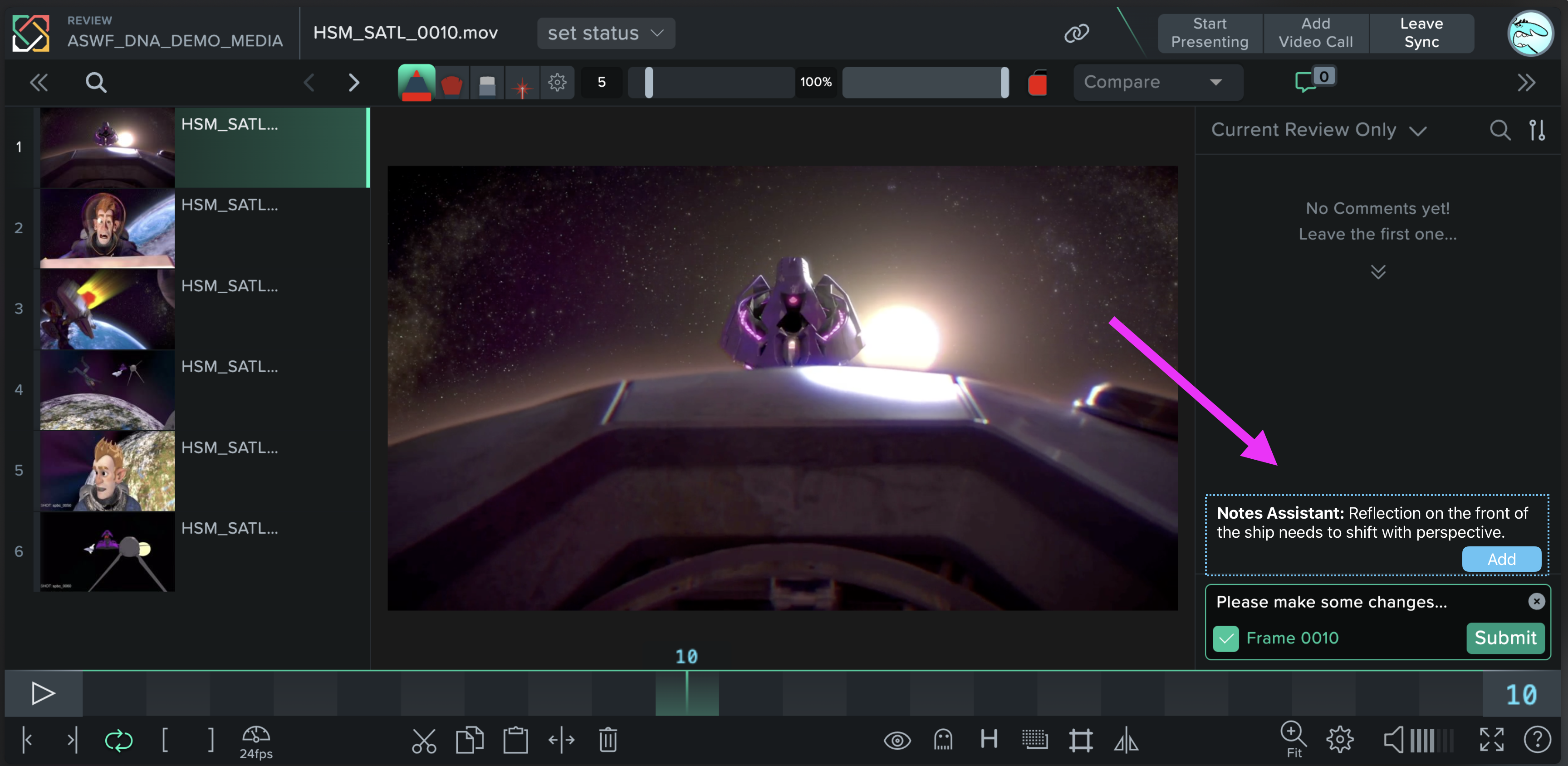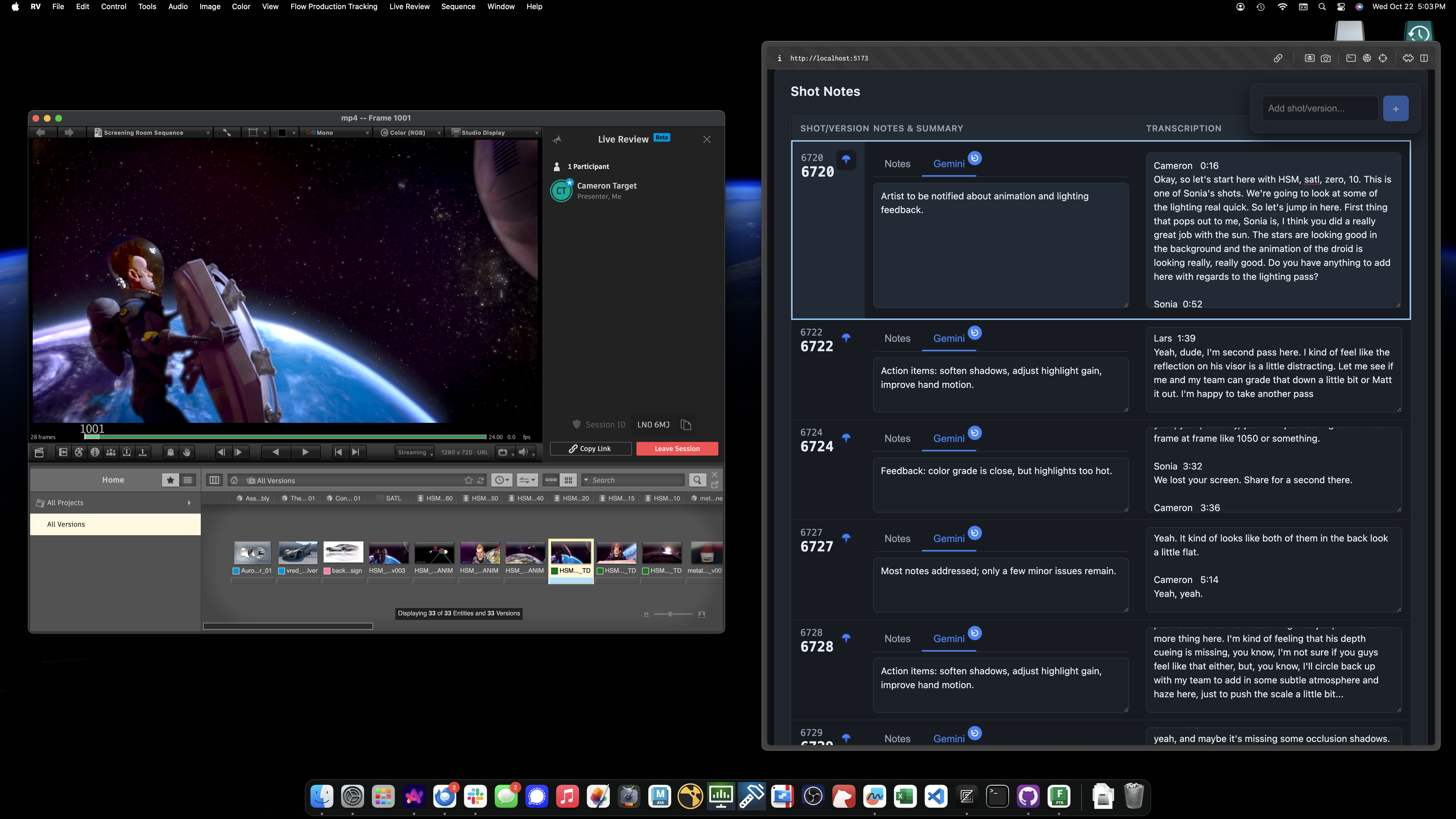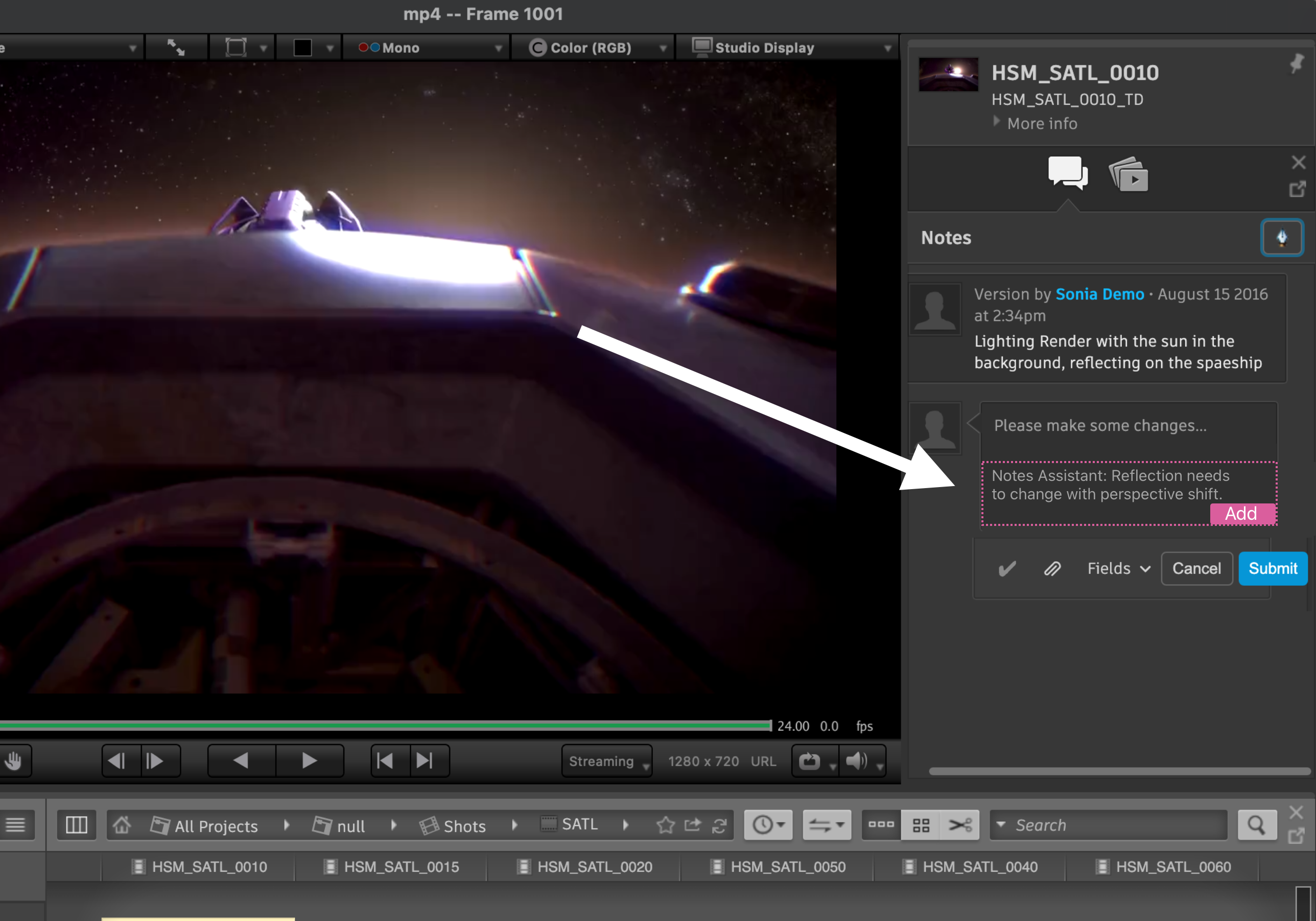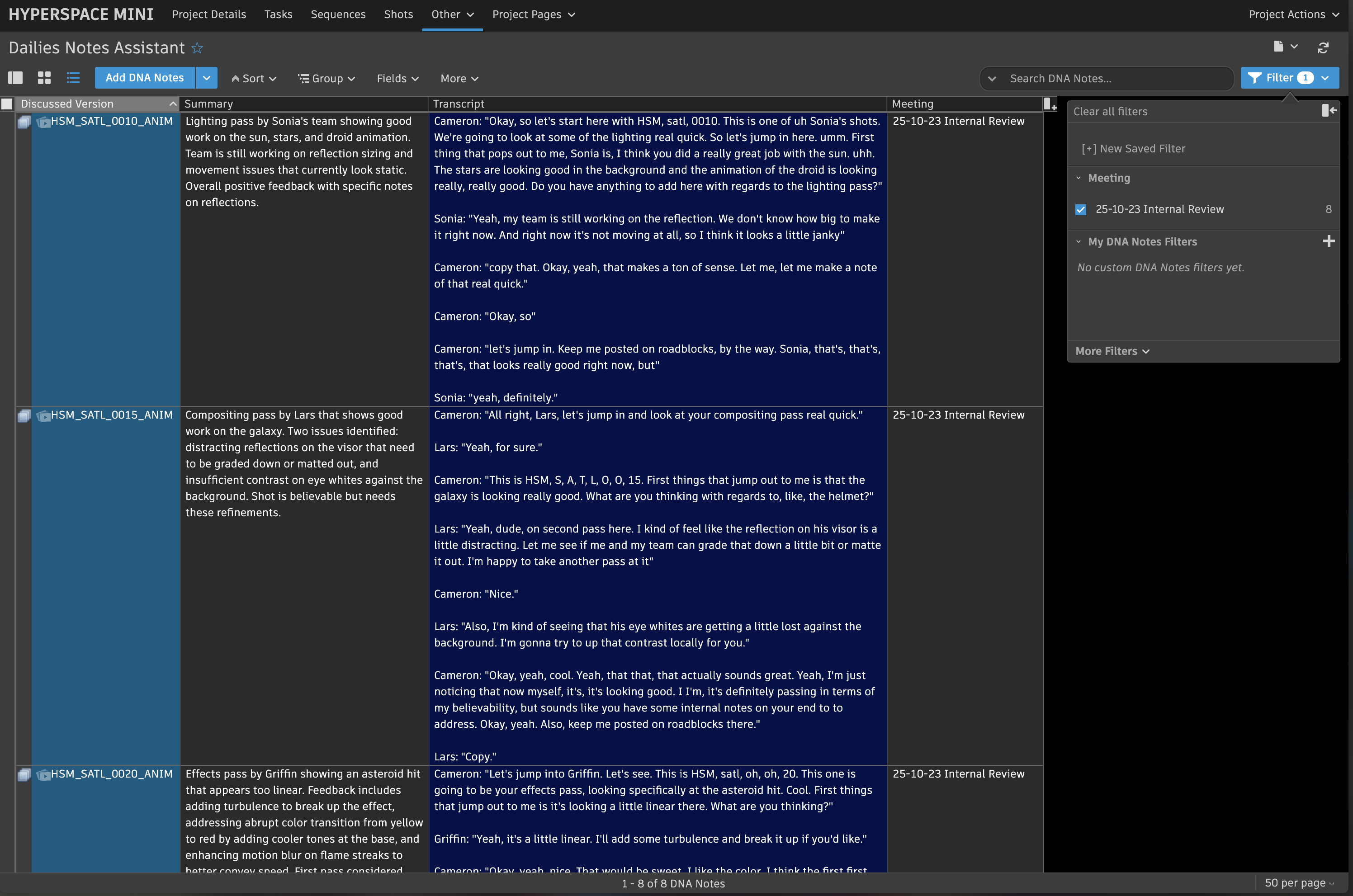ASWF Dailies Notes Assistant - A Tool for Notetakers
This post covers pretty senior level work volunteered by some serious veterans in the industry - so with that in mind, I am adding to the project humbly with the perspective I've gained as a previous coordinator. I'm hoping to add that perspective here to help build a useful LLM assisted note-taking process.
What is 'DNA' so far?
'DNA' stands for Dailies Notes Assistant. It's a new open-source project in early development by folks contributing at the Academy Software Foundation. The idea behind the project is to scope out the usefulness of integrating LLM transcriptions with the VFX note-taking process. A heavy emphasis on utility rather than novelty is at the center of the project — as well as a thoughtfulness about adding to rather than taking away from the work of production professionals.
Why am I trying to help?
First and foremost, I think it's cool and I want the experience of being part of a development process for a serious tool in VFX. In addition though, as a coordinator with pipeline experience, I feel especially well-suited to contribute to this specific project. I've spent the last few years evaluating and creating workflows in VFX with a focus on production workflows.
My aim right now is to do two things at the same time, think a lot about how I would (or wouldn't!) use this tool as a coordinator, and, learn as much as I can from the genuine geniuses that are helping out on this project.
The Coordinator Perspective
There's a knee-jerk reaction to A.I at the moment by a lot of folks who have been doing this for a long time. Production people I know have flat-out denied to even be asked about this project, and not for no reason. There's a huge gap between perceived utility and actual utility with A.I projects, and DNA is not unique to that. This is why this team so intelligently prioritized coordinator feedback so early on. Another fear on the part of production professionals is losing responsibilities. If their jobs are made up of duties, taking duties away feels like the beginning of the end!
So, from the coordinator's perspective, this tool needs to A. be genuinely useful, and B. not take from the work of coordinators.
To show what that looks like, here's a list of features:
- Listens to and transcribes meetings via video call OR live recording.
- Summarizes transcripts and suggests notes related to each work version reviewed.
- Is simple to use, accurate, and gives coordators an easy and out of the way method for accepting or rejecting suggestions.
- Looks cool.
- Integrates well with Production Tracking Software and Review Tools.
For me, the dream user-facing end of this application looks something like this:

I love SyncSketch so just using this as an example, but an integration like this could be added to SG Create, SG Creative Review, RV, Frankie, Clearview and beyond.
There's an even better use-case I'll get to below as well, but I have this down as my dream scenario for a few reasons. The direct integration with the review UI, is to me the most handy. What you really want as a coord taking notes is not unlike what you really want built into your code editor as a software engineer. It's important you learn how to take notes, the same way it's important you learn to code, so overbearing Claude-Code type do-it-for-you solutions are not what you want. A simple code-completion or note-recommendation integration is really the value-add here. Code-complete is right in your editor, so DNA should meet users in their "code-editors" too.
The problem is, in review workflows, like in coding, there are a lot of "code editors" to choose from. The mission of the Academy Software Foundation is, in part, to create a space to centralize and better manage the chaos that is a million different proprietary ways of doing things. So in that spirit, let's re-hatch this plan a bit.
Re-shaping the "Dream" Integration
The Project will need it's own frontend UI as well as an API. For this to be really open-source, DNA will need to be standalone. For it to be really useful, it will need to be integratable. Just like a tool like Open RV, it will need both options.

Screenshot of Dailies Notes Assistant being used side by side with RV.
The most recent mock-up I was able to test exists this way. A standalone web app that integrates with Google Meet, ShotGrid and Vexa AI (a meeting transcription application). Even as an extremely early test, the app shows huge promise and has the gears turning in everyone's brains about how to expand and add to the current functionality. In reviews where coordinators have a big screen near by, say in a meeting room, or a broadcast of some kind showing the versions under review, this workflow is great.
I do wonder though, especially in remote work cases (in which I can't emphasize enough how perfect SyncSketch is as a solution) — if the most useful scenario as a coordinator will be when you can bring the suggestions directly into your work with two use-cases of the transcription technology:
Direct assistance / recommendations:

Screenshot of Dailies Notes Assistant being used directly in ShotGrid RV.
Retraceable meeting transcriptions with version-based and speaker-based metadata:

Screenshot of Dailies Notes Assistant being used directly in ShotGrid as a post-review breadcrumb trail.
The latter use-case is the really important one and it's notably not out of the reach of the open-source UI. If I'm arguing for anything in this post, it's that this tool needs both it's own UI and integrations, and both should be made with the two usecases I've outlined in mind. As awesome as note taking suggestions will be — storing review transcriptions in ShotGrid (or some place else) further enhances the primary utility of tracking platforms and of a lot of coordinator responsibilities: Maintaining and communicating a record of work done and to be done on any given project.